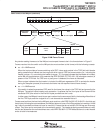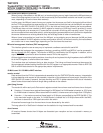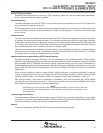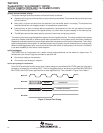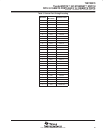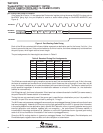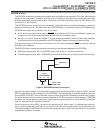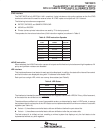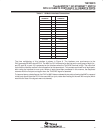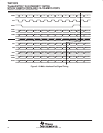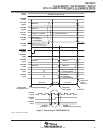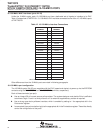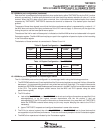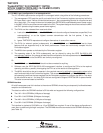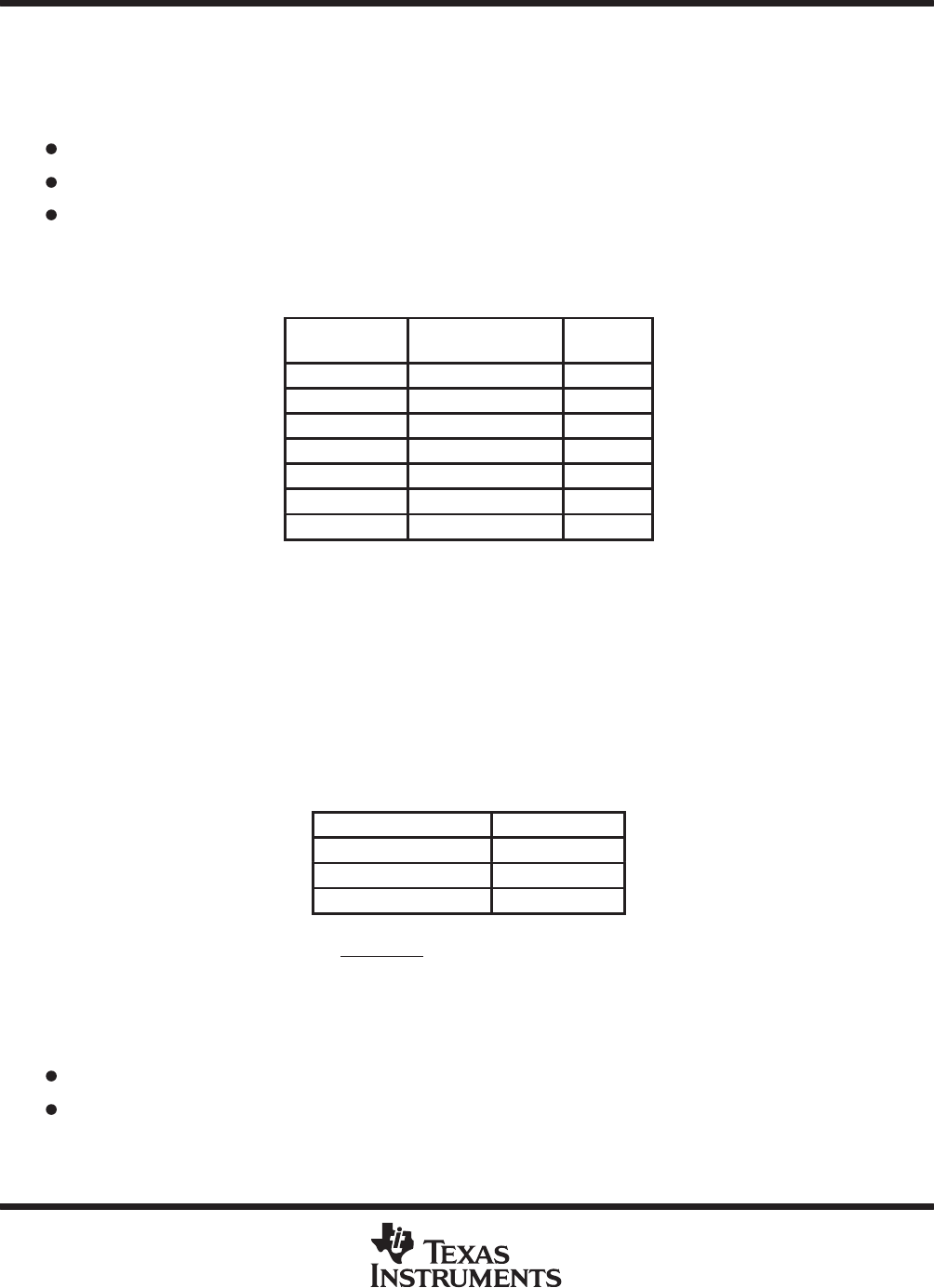
TNETX3270
ThunderSWITCH 24/3 ETHERNET SWITCH
WITH 24 10-MBIT/S PORTS AND 3 10-/100-MBIT/S PORTS
SPWS043B – NOVEMBER 1997 – REVISED APRIL 1999
29
POST OFFICE BOX 655303 • DALLAS, TEXAS 75265
JTAG interface
The TNETX3270 is fully IEEE Std 1149.1 compliant. It also includes on-chip pullup resistors on the five JTAG
terminals to eliminate the need for external ones. All JTAG inputs and outputs are 3.3-V tolerant.
The following instructions are supported:
EXTEST, BYPASS, and SAMPLE/PRELOAD
HIGHZ and IDCODE
Private (various private instructions are used by TI for test purposes)
The opcodes for the various instructions (6-bit instruction register) are shown in Table 8.
Table 8. JTAG Instruction Opcodes
INSTRUCTION
TYPE
INSTRUCTION
NAME
JTAG
OPCODE
Mandatory EXTEST 000000
Mandatory SAMPLE/PRELOAD 000001
Optional IDCODE 000100
Optional HIGHZ 000101
Optional RACBIST 000110
Private TI testing Others
Mandatory BYPASS 111111
HIGHZ instruction
When selected, the HIGHZ instruction causes all outputs and bidirectional pins to become high impedance. All
pullup and pulldown resistors are disabled.
LED interface
This interface allows a visual status for each port to be displayed. In addition, the state of the internal flow control
and fault functions are displayed along with 12 software-controllable LEDs.
Each port has a single LED, which can convey three states (see Table 9).
Table 9. LED States
STATE DISPLAY
No link Off
Link, but no activity On
Activity (bits moving) Flashing at 8 Hz
The interface is intended for use with external octal shift registers clocked with LEDCLK. Every 16th of a second,
all the status bits are shifted out via LEDDATA
.
The status bits are shifted out in one of two possible orders, as determined by slast in LEDControl, to ensure
that systems that do not require all the LED status can be implemented with the minimum number of octal shift
registers (see Table 10).
If slast = 0, the software-controlled status bits are shifted out before the port status bits.
If slast = 1, the software-controlled status bits are shifted out after the port status bits.
The fault status bit is shifted out last, enabling a minimal system that displays only the fault status to be
implemented without any shift registers.



